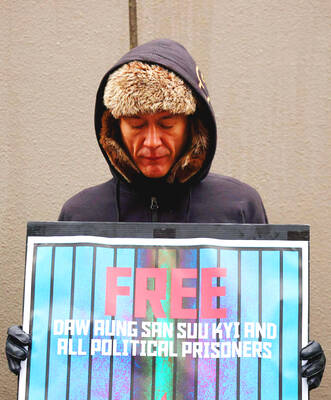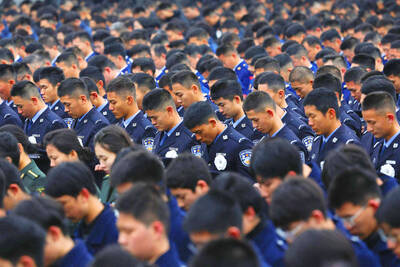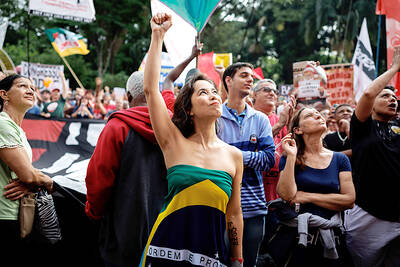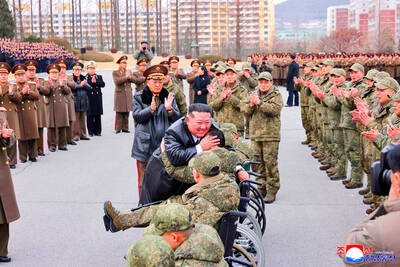More signs of the "greening" of Australia have simultaneously appeared on opposite sides of the continent.
Near Perth, the state capital of Western Australia, a sea of wheat fields and a petroleum refinery do not appear to a casual observer to be the components of an energy breakthrough.
But they have come together as the country's first wheat-to-ethanol project, accelerating efforts to cut the use of gasoline in Australia by up to half within 20 years by growing bio-fuel substitutes for gasoline on a scale only Brazil, which uses sugar cane rather than grain as the feed stock, has so far achieved.
And what looks like a dazzling cutting-edge breakthrough has been revealed over on the eastern side of the country at Newcastle north of Sydney.
There, resembling a huge work of contemporary art, an arrangement of 200 mirrors surround a slender 24m silver tower supporting a metal and glass ring shaped like a basketball hoop minus the net. Not artwork, though, but a source of fuel which turns water and natural gas into a storable "solar gas," which packs 26 percent more energy than liquefied petroleum gas (LPG) and already powers road transport across the world.
"Think of it as bottled sunshine," said John Wright, director of the Energy Transformed national research group.
"The old bogey of solar power -- what happens when the clouds roll over, or it's night -- is banished by this. We are turning natural gas into a super efficient gas," he said.
In fact the Solar Tower now running at Newcastle is sufficiently efficient to generate, in theory, all of Australia's electrical needs from a 50km2 site located in the continent's remorselessly dry and sunny desert zones.
And it looks deceptively simple. The tower which is the focus of the newly named National Solar Energy Centre scavenges every ray of sunshine by the use of several types of collectors and very complex computerized management systems for which the software proved the major challenge.
Between the compact layout of near vertical mirrors are a set of trough-like solar energy absorbers which create a parallel path by which the concentrated heat drives a closed cycle of hot high pressure fluid through conventional turbines able to feed power into a normal electricity grid.
Wright said the essential design is sufficiently compact to install on a variety of scales in industrial estates, large retail malls, and landfill sites, which are a rich source of methane or natural gas.
"You could for instance, use one of these towers to generate the hydrogen fuel the automotive and trucking industries are looking at to replace gasoline right on the site of a major hydrogen fuel depot -- solving the challenge of transporting it in pressurized, refrigerated tankers or by special pipelines," he said.
The prototype tower produces more than 500KW of energy and can create industrially useful temperatures of more than 1,000oC at the focus points used to turn natural gas into the hydrogen enriched "solar gas."
The Energy Transformed group, which is jointly-funded by the state and private energy industry partners, is cooking up a lot more than large scale applications for capturing solar energy. With the government in Canberra backing "clean coal" as a means of keeping Australia's massive reserves of coal competitive with nuclear power, the research group is already involved in a multi-billion dollar programme to capture the carbon dioxide pumped into the atmosphere by coal burning power plants.
And this despite Australia's enthusiasm for selling its own very large uranium reserves.

The Burmese junta has said that detained former leader Aung San Suu Kyi is “in good health,” a day after her son said he has received little information about the 80-year-old’s condition and fears she could die without him knowing. In an interview in Tokyo earlier this week, Kim Aris said he had not heard from his mother in years and believes she is being held incommunicado in the capital, Naypyidaw. Aung San Suu Kyi, a Nobel Peace Prize laureate, was detained after a 2021 military coup that ousted her elected civilian government and sparked a civil war. She is serving a

China yesterday held a low-key memorial ceremony for the 1937 Nanjing Massacre, with Chinese President Xi Jinping (習近平) not attending, despite a diplomatic crisis between Beijing and Tokyo over Taiwan. Beijing has raged at Tokyo since Japanese Prime Minister Sanae Takaichi last month said that a hypothetical Chinese attack on Taiwan could trigger a military response from Japan. China and Japan have long sparred over their painful history. China consistently reminds its people of the 1937 Nanjing Massacre, in which it says Japanese troops killed 300,000 people in what was then its capital. A post-World War II Allied tribunal put the death toll

‘NO AMNESTY’: Tens of thousands of people joined the rally against a bill that would slash the former president’s prison term; President Lula has said he would veto the bill Tens of thousands of Brazilians on Sunday demonstrated against a bill that advanced in Congress this week that would reduce the time former president Jair Bolsonaro spends behind bars following his sentence of more than 27 years for attempting a coup. Protests took place in the capital, Brasilia, and in other major cities across the nation, including Sao Paulo, Florianopolis, Salvador and Recife. On Copacabana’s boardwalk in Rio de Janeiro, crowds composed of left-wing voters chanted “No amnesty” and “Out with Hugo Motta,” a reference to the speaker of the lower house, which approved the bill on Wednesday last week. It is

FALLEN: The nine soldiers who were killed while carrying out combat and engineering tasks in Russia were given the title of Hero of the Democratic People’s Republic of Korea North Korean leader Kim Jong-un attended a welcoming ceremony for an army engineering unit that had returned home after carrying out duties in Russia, North Korean state media KCNA reported on Saturday. In a speech carried by KCNA, Kim praised officers and soldiers of the 528th Regiment of Engineers of the Korean People’s Army (KPA) for “heroic” conduct and “mass heroism” in fulfilling orders issued by the ruling Workers’ Party of Korea during a 120-day overseas deployment. Video footage released by North Korea showed uniformed soldiers disembarking from an aircraft, Kim hugging a soldier seated in a wheelchair, and soldiers and officials